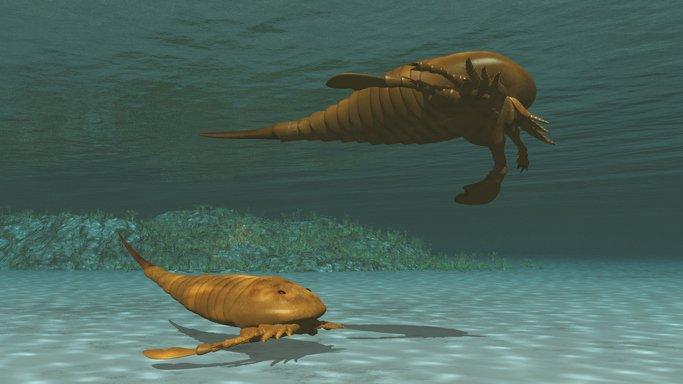Fossil of giant prehistoric fish with deadly fangs found in South Africa
- Published
- comments
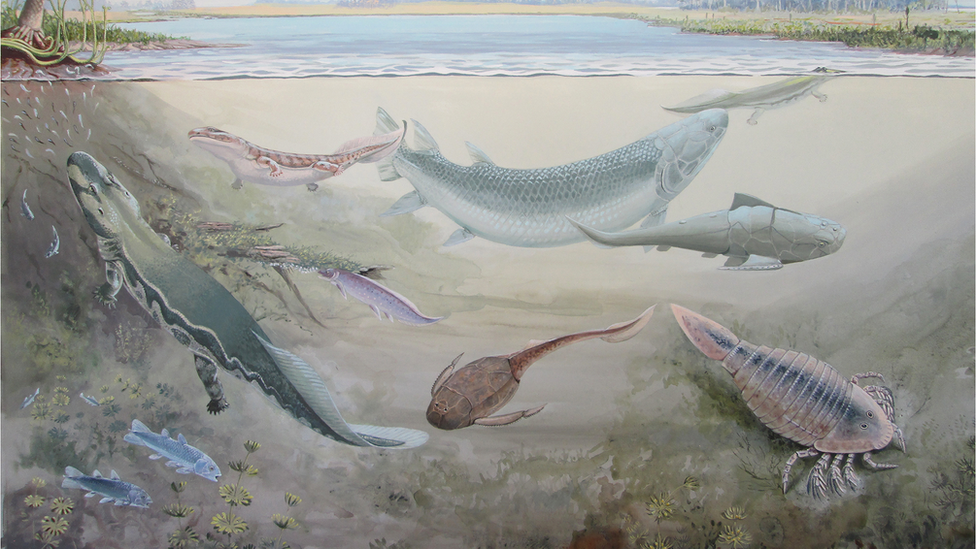
An artist's interpretation of prehistoric fish fossils found at Waterloo Farm in South Africa
Researchers in South Africa have unearthed a huge fish with deadly fangs which they think might've even eaten our early ancestors!
The fossils date back over 350 million years - before dinosaurs roamed the earth - and it's thought they could grow up to 2.5 metres long.
It's likely they would munch on four-legged creatures called tetrapods, which are the animals humans eventually evolved from.
Want to know more about this fishy predator? Keep reading!
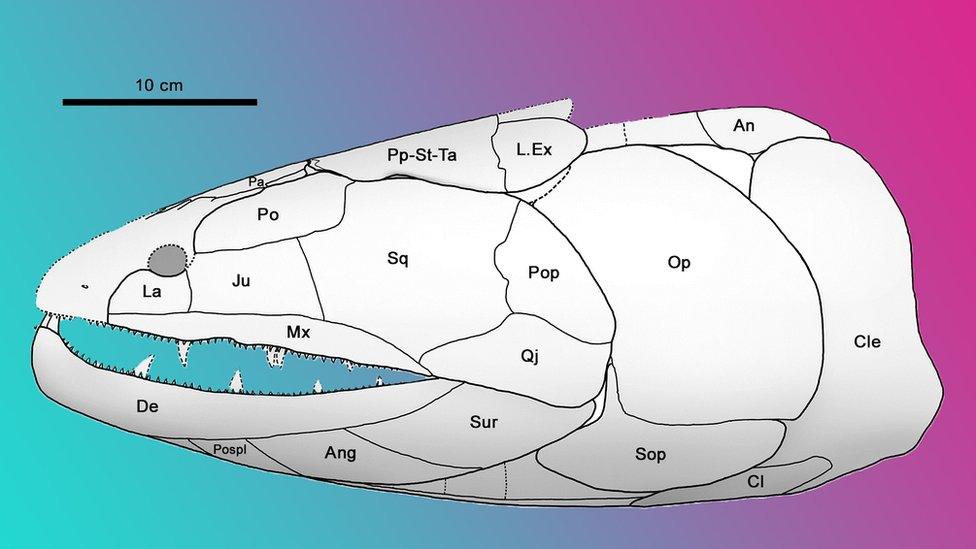
This is the model the researchers made of the fish, Hyneria udlezinye, from the remains they excavated
Experts from South Africa's Rhodes University and Uppsala University in Sweden pieced together lots of fossilised remains of the fish, called Hyneria udlezinye.
The remains included the skull, lower jaw and gill cover and they found huge fangs on the lower jaw.
Researchers think it's likely to be related to another ancient bony fish called tristichopterids.
The Late Devonian period was around 383 million to 359 million years ago!
It's also known as the 'Age of the Fishes'.
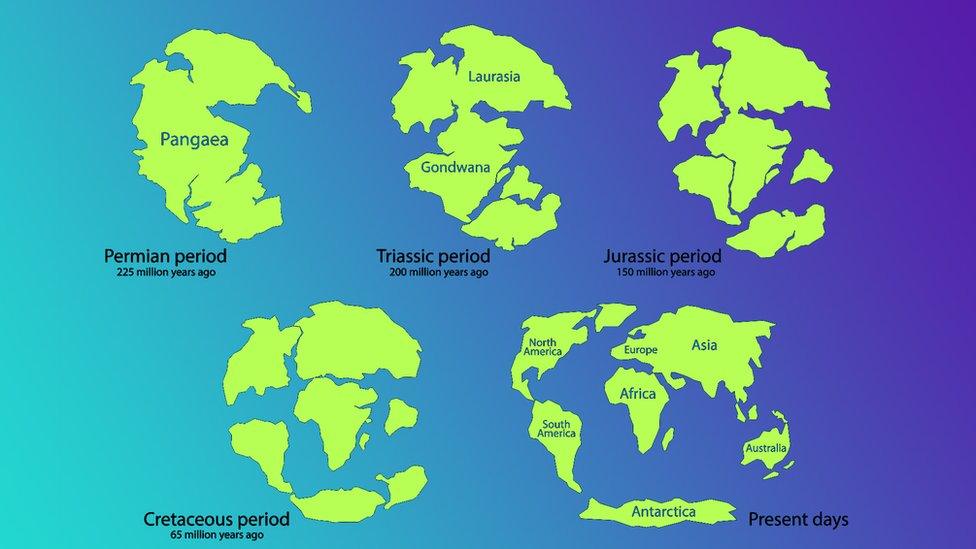
These are the different stages in what was called the 'continental drift' - how the layout of the earth we know today changed over time. Gondawana was made up of what is now Africa, South America, India, Madagascar, Australia and New Zealand.
Most of the fossils from the Late Devonian period have so far been found in Australia, and because of this, it's previously been thought that fish like this one originated there.
This new research could change this theory, as it's the first tristichopterid to be found in what used to be a polar region during the Late Devonian period.
Ultimately, tristichopterids were wiped out at the end of the Devonian period around 359 million years ago.
Palaeontologists say this mass extinction event led to huge changes in what sort of fish existed in our ancient seas and lakes.
- Published28 February 2023
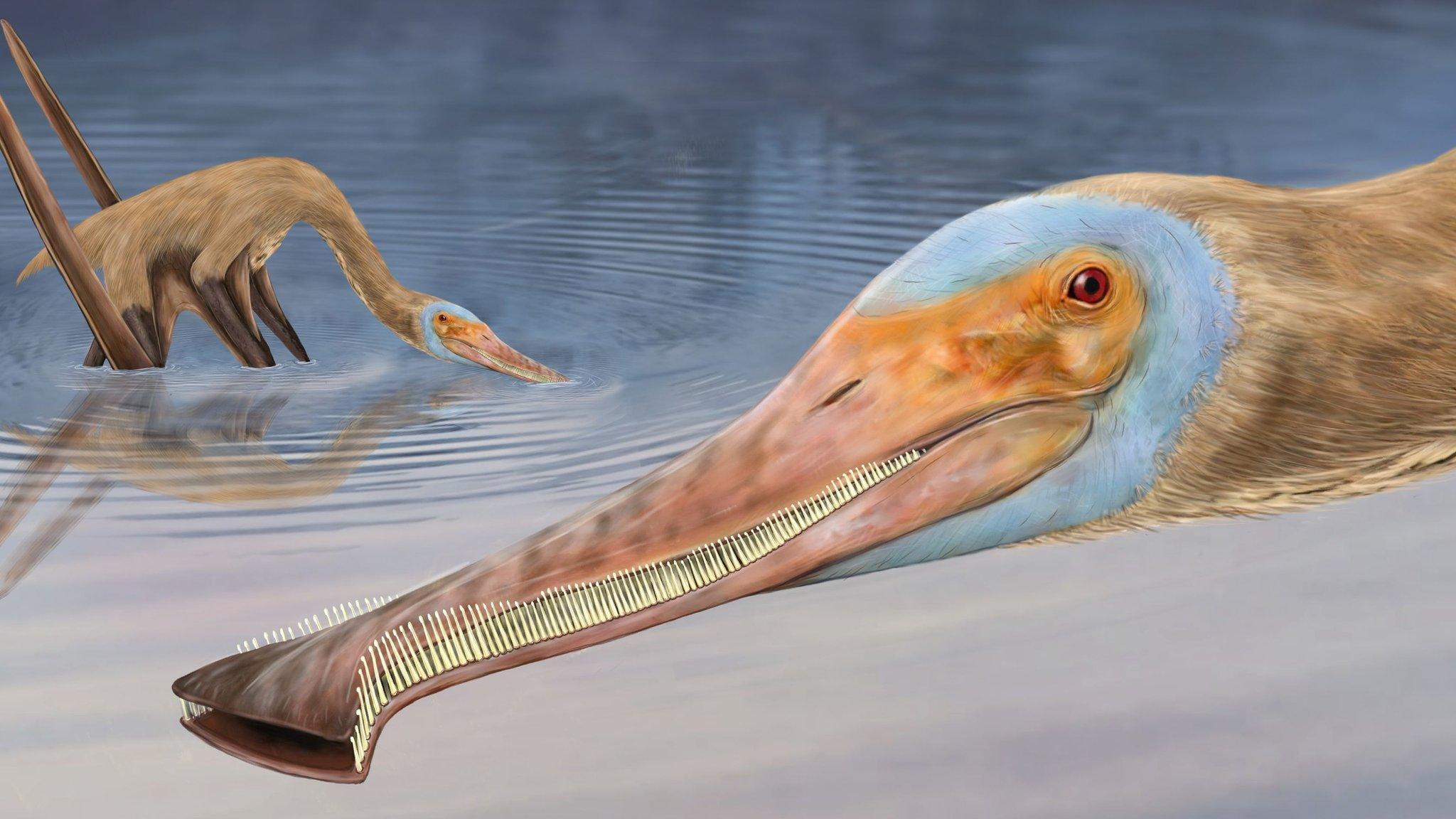
- Published22 January 2023
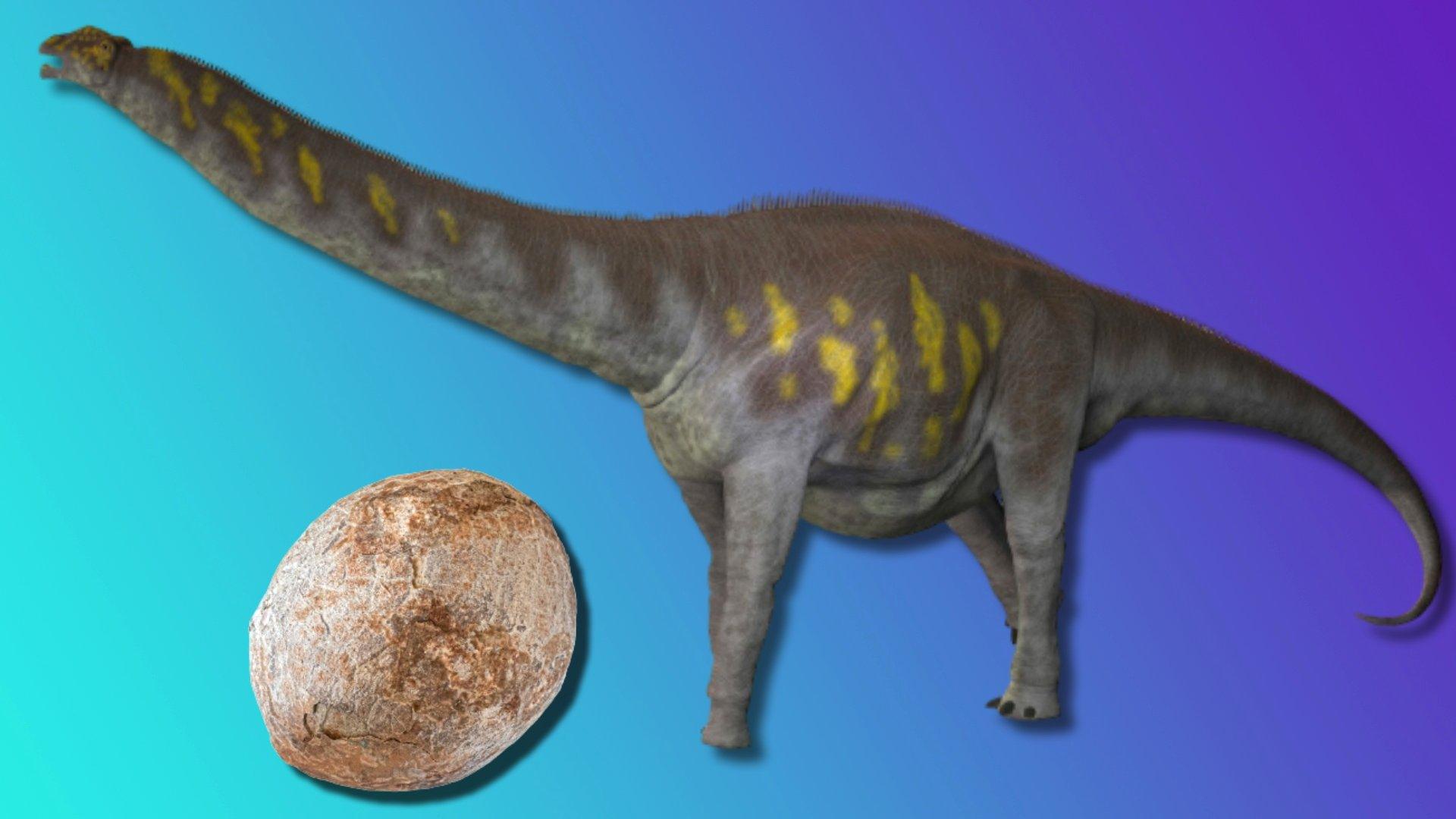
- Published31 January 2023
